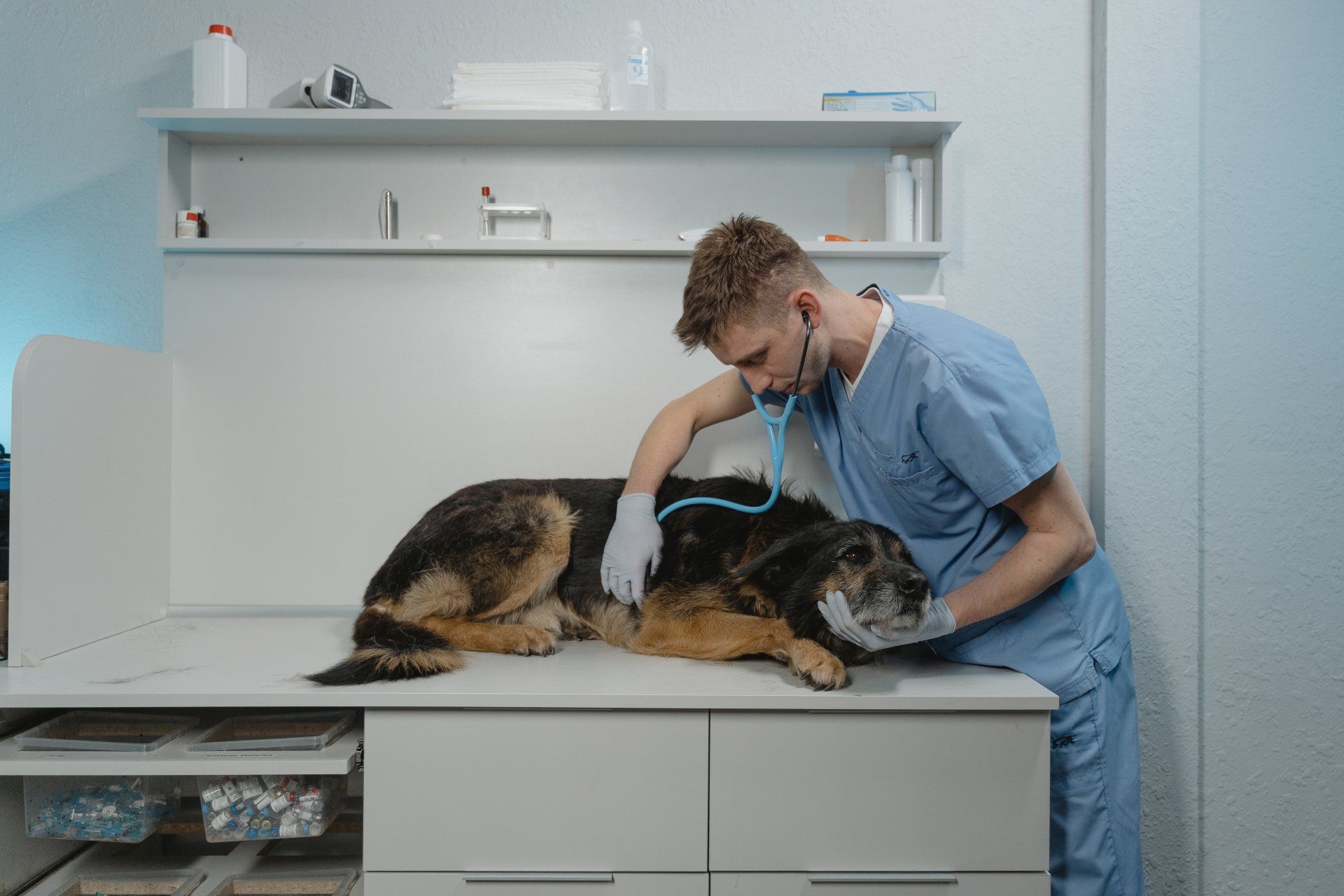Get in touch
555-555-5555
mymail@mailservice.com

Hypothyroidism
Hypothyroidism is defined as low circulating thyroid hormone levels and is one of the most common canine hormonal disorders. The canine thyroid gland is found in the neck with each half of the organ on either side of the trachea (windpipe). Thyroid hormone is involved in regulating metabolism, so when there’s not enough circulating in the body of a dog, there are many secondary effects. Because of these effects, it’s worth diagnosing and starting treatment. Dogs with the condition are either born with or acquire low levels of thyroid hormone; acquired hypothyroidism is much more common and will be the most of the focus below.
Kinds and causes of hypothyroidism
As mentioned above, dogs can have congenital hypothyroidism, which means they are born with it, or develop it as they get older. When dogs acquire hypothyroidism, it can be either primary, secondary, or tertiary. This categorization distinguishes different causes of hypothyroidism. Tertiary hypothyroidism has not been seen in dogs, so is just hypothetical; it has been recognized in people.
Primary hypothyroidism means that thyroid hormone is decreased because the thyroid glands themselves are damaged. This damage usually comes in the form of autoimmune destruction of the thyroid glands or a process called idiopathic atrophy, meaning the glands get small and less functional for an unknown reason. Either way, the end result is less thyroid hormone. Primary hypothyroidism is the most common cause of hypothyroidism in dogs.
Secondary hypothyroidism occurs when the hormone that triggers thyroid hormone release is decreased. This hormone, aptly called thyroid stimulating hormone (TSH) , comes from the pituitary gland in the brain, so issues like tumors or inflammation affecting the pituitary gland can lead to secondary hypothyroidism.
Diagnosing hypothyroidism
There are some clues at home that may lead you and your veterinarian to believe your dog has hypothyroidism. Hypothyroid dogs are often lethargic, overweight, have skin issues, and may have neurologic abnormalities. Skin issues include fur loss that is often symmetrical, scaly or greasy skin, dry and brittle fur, and recurrent infections. There are a variety of neurologic problems associated with hypothyroidism - seizures or nerve problems causing weakness and an abnormal gait may be seen.
Your veterinarian will recommend testing consisting of a complete blood count (CBC) to check red and white blood cells, a chemistry panel to assess blood sugar, liver and kidney values and electrolytes, a urinalysis, and a thyroid level (thyroxine or total T4). Because of the secondary effects of hypothyroidism, there may be changes on the blood work like a slightly decreased red blood cell count or increased cholesterol. With this screening lab work other diseases can be ruled out.
Because total T4 levels fluctuate significantly throughout the day or as a result of certain medications or other illnesses, further testing will be recommended if the level is low. Free T4 is the active form of thyroid hormone in dogs, so it is recommended to check this level if a dog’s total T4 is low. Thyroid stimulating hormone (TSH) can also be checked and can be helpful in diagnosing hypothyroidism. If a dog has low levels of thyroid hormone, the TSH level should be normal or high to try to get the body to push more thyroid hormone into circulation even though the thyroid cells will not respond.

Euthyroid sick syndrome
As mentioned above, dogs can have a low total T4 level without being truly hypothyroid. This condition is called euthyroid sick syndrome. For example, diseases like Cushing’s or hyperadrenocorticism, Addison’s or hypoadrenocorticism, kidney and liver failure, diabetes, and infections can all cause a decrease in circulating T4. In these situations, even though the T4 level is low, supplementing with medication is not indicated and will not improve symptoms. This is why running full blood work and confirmatory testing is so important in diagnosing hypothyroidism.
Treating hypothyroidism
Fortunately, treatment of hypothyroidism is relatively straightforward - supplement thyroid hormone with lifelong oral medication given one to two times daily. Any of the treatable secondary effects of hypothyroidism like a skin infection should be addressed.
Generally, veterinarians recommend rechecking thyroid levels about a month after starting medication. Ideally, a blood sample should be collected just before and again about 4-6 hours after giving the medication. If only one sample can be collected it should be done 4-6 hours post-pill. Some veterinarians will also check a thyroid stimulating hormone level. Often veterinarians recommend checking a thyroid level 1-2 times yearly. In addition to laboratory results, monitoring the dog for improved clinical signs is important to making dose adjustments.
Prognosis
With appropriate supplementation of thyroid hormone, the prognosis is good for treatment of hypothyroidism. Skin and neurologic issues should improve over several months or faster. Dogs seem to feel more active faster, in about a week. Dogs should be on thyroid supplementation for their entire lives, so making sure to stay up on their medication is important to keep them feeling good and keeping them healthy.



